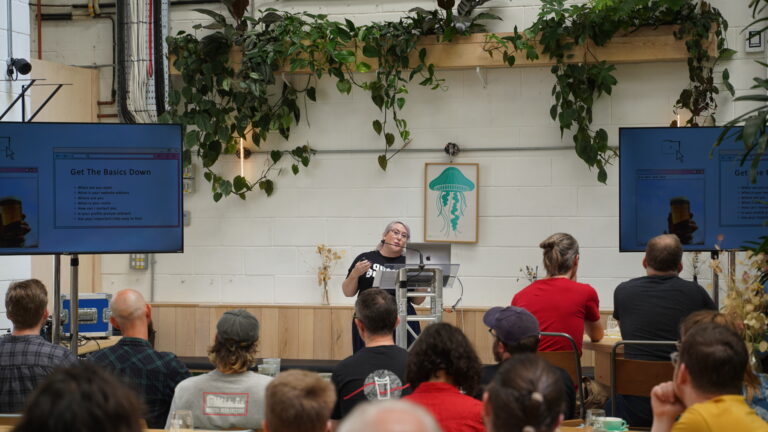In today’s beverage and brewing industry, digitalization, innovation, and sustainability are key drivers of change. Yet, perhaps even more critical is the pursuit of efficiency—using valuable raw materials as effectively and sparingly as possible. For breweries of all sizes, this focus is paramount, explains Markus Ernst, technical manager of brewing solutions at BarthHaas.
While highly efficient hop products have been used for decades to impart bitterness, since the 1990s there’s been a growing emphasis on infusing beers with as much hop aroma and flavour as possible.
The rise of styles such as hazy pales and juicy IPAs has led to dramatic increases in hop quantities used. Hop dosages of up to 5 kg per hectolitre are now quite common.
Even as the craft beer industry trends toward less hop-driven beers like lagers, heavily hopped brews remain a powerful way to stand out from the competition and build a diverse portfolio.
Dry hopping technology also offers an opportunity to bring the quality and taste of non-alcoholic beers closer to their regular counterparts, keeping all of your customers happy.
However, along with these advantages come challenges that brewers know all too well. Tests with pellets have shown that 1 kg of hop pellets can absorb up to 14 litres of beer. In some beer styles using three or more kilograms of hops per hectolitre, up to 50% of the “finished”—and already dry-hopped—beer is lost.
While enriched hop pellets like Lupomax can reduce beer losses, the fundamental problem of dosing and removing spent hops remains.
Sooner or later, every brewer who uses dry hopping methods has to grapple with issues like yield and costs.
This is where Spectrum offers significant advantages and flexibility compared to conventional hop products.
There are, of course, a number of liquid hop products on the market. Where Spectrum stands out is in offering the efficiency you need while providing all the flavour, aroma, and other valuable components you expect from hop pellets.
Reducing Beer Losses and Capital Investment
When static dry hopping — dosing loose or bagged hop pellets without any equipment — reaches its technical limits, brewers often consider investing in modern, fully automated dosing systems with hop retention. This is an expensive process.
Equipment for producing hop slurries — mixtures of hops and beer (or deaerated water) — is significantly cheaper, but with these systems, all the hop particles are flushed into the tank.
The plant particles introduced must then be separated using centrifuges after dry hopping, or tanks must be emptied above the hop/beer phase via secondary valves, leading to high beer losses.
This occurs when dried hop particles come into contact with beer, swell, and then fall apart. Spectrum is naturally 100% dispersible, so it doesn’t create hop waste that needs to be removed by any of these methods.
This means you spend less time and effort removing spent hop material, lose less beer during production, and are less likely to need expensive equipment to manage hop material.
Most hop aroma components are more or less insoluble in cold water without any further treatment, so many products are intended for use in the hot area of the brewing process to increase solubility.
Therefore, it is difficult to dissolve aroma components without using a non-hop solvent, which isn’t popular in the brewing industry. Spectrum is produced uniquely, making all aroma and flavour components dispersible in cold water without any carrier or solvent.
Our studies have shown that Spectrum can significantly reduce production times by allowing full natural flavour to develop more quickly.
Customers have reported production savings of over a week when producing heavily hopped beers.
These gains are particularly noticeable when adding hops in the cold section of the brewing process.
Another standout feature of Spectrum is that, unlike other hop products like pellets, it has no negative effect on yeast performance during fermentation. This means you can harvest and reuse the yeast.
Although traces of bitter acids from dry hopping are transferred to the harvested yeast, the absence of insoluble plant particles means the yeast can be reused — even if the beer is hopped with Spectrum during primary fermentation.
Consequently, using Spectrum offers great potential for increasing hop aroma intensity through biotransformation of hop aroma components into more fruity notes and releasing aromas from precursors.
No Hop Creep
Tests have shown that Spectrum does not produce “hop creep.” Hop creep occurs when hop enzymes — especially beta-amylase — break down non-fermentable sugars in the residual extract, potentially triggering a new fermentation in the presence of yeast. This can lead to an increase in diacetyl content, exceeding the taste threshold.
Additionally, the alcohol content can increase significantly, which can lead to non-compliance with legal requirements, particularly in non-alcoholic beers.
With Spectrum, these enzymes are inactivated to ensure this process cannot occur as a result of its use.
To demonstrate the positive effects of using Spectrum alongside other liquid hop products from BarthHaas, we’ve collaborated on projects showcasing the benefits of these innovative products. One such project was the conversion of the Hoptopod recipe from Dogma Brewery in Serbia.
Hoptopod is the brewery’s best-known beer and top seller in the Balkan region — a West Coast-style IPA that’s been in their portfolio for a long time. The original recipe uses 100% T90 pellets.
The goal of our collaboration was to completely replace the hop pellets with liquid hop products while retaining the original flavour.
The resulting beer, named Meta-Hoptopod, clearly shows that efficiency can be significantly increased while still delivering full natural hop flavour.
For the data collection, 40 hL batches of both Hoptopod and Meta-Hoptopod were brewed. All relevant parameters, such as brew volume, bottling volume, and losses, were documented.
Thanks to the use of liquid hop products, beer production and bottling volume increased by over 10%.
Beer losses were drastically reduced to just 3% of the cast-out quantity, and a time saving of around 25% was achieved from mashing to bottling.









